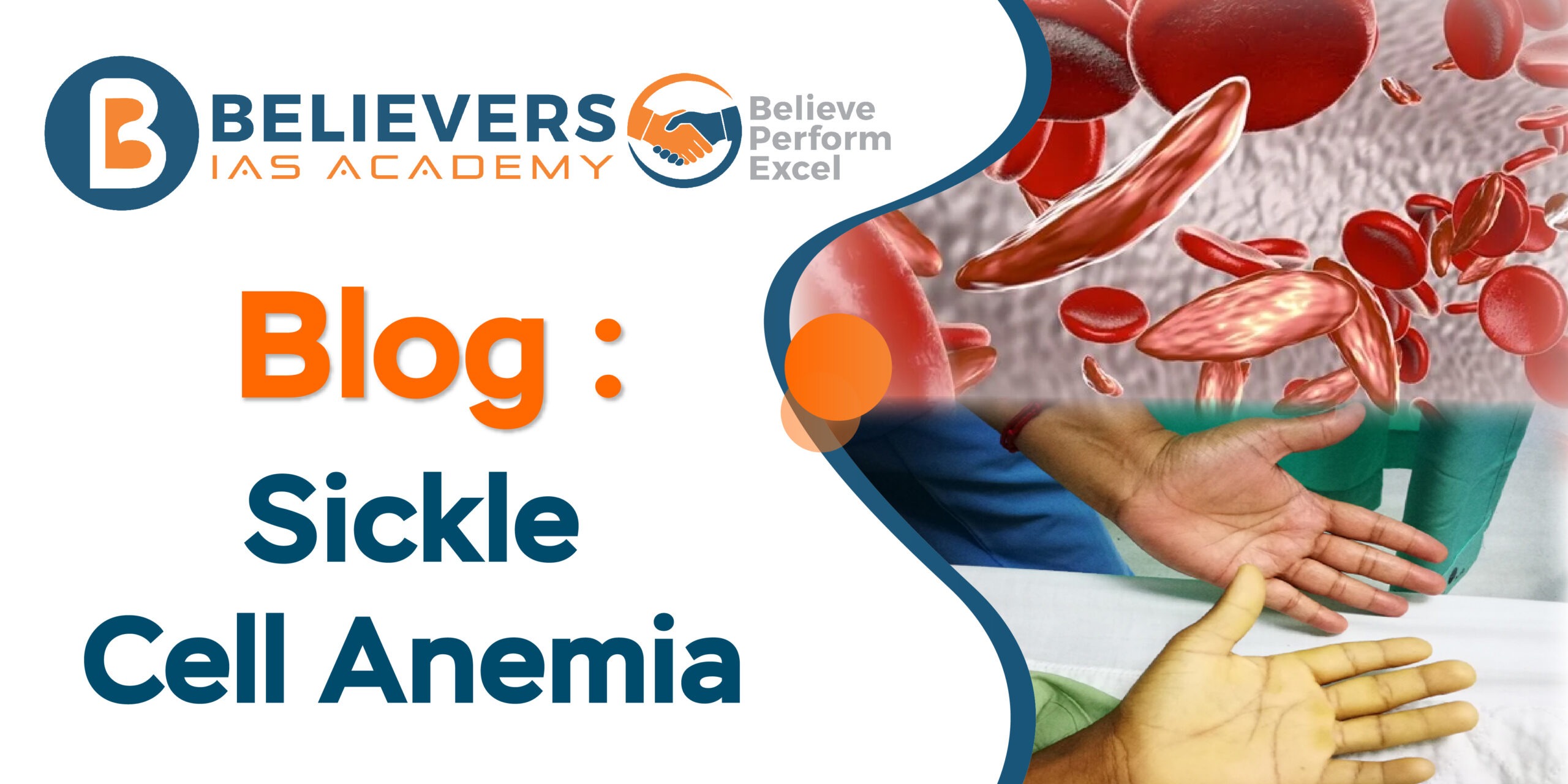Blog: Sickle Cell
What is Sickle Cell anaemia?
Sickle cell anaemia is a type of sickle cell disease, a group of inherited blood disorders. When a person inherits two defective copies of the beta-globin gene, one from each parent, sickle cell disease is the result. Hemoglobin S, a defective haemoglobin protein, is the result of this. Flexible red blood cells are transformed into rigid, sickle-shaped cells by haemoglobin S. These sickle cells may obstruct blood flow, which may result in discomfort and organ harm.
Millions of people worldwide are afflicted by sickle cell disease. People with sub-Saharan African ancestry, those from Spanish-speaking parts of the Western Hemisphere, Saudi Arabia, India, and Mediterranean nations, as well as those from Saudi Arabia, are particularly prone to it.
What are the symptoms of SCD?
- Pain Crisis(Vaso-Occlusive Crisis): One of the defining signs of SCD is the pain crisis (also known as the vaso-occlusive crisis). It happens when red blood cells with a sickle shape obstruct the flow of blood through tiny blood arteries. Severe pain may result from this, frequently in the chest, belly, bones, and joints. The length and severity of a pain crisis can vary.
- Anaemia: SCD has been linked to chronic anaemia, which manifests as weakness, exhaustion, and pale complexion.
- Jaundice: Yellowing of the skin and eyes is referred to as jaundice and is caused by the quick breakdown of sickle cells, which can result in an excess of bilirubin in the blood.
- Hands and Feet Swelling: Sickle cells can restrict blood flow to the hands and feet, resulting in swelling.
- Frequent Infections: Because their spleens may not function properly, people with SCD are more prone to infections. Some forms of bacteria are filtered out of the bloodstream by the spleen.
- Delayed Growth and Development: Children with SCD may experience delayed growth and development, including delayed puberty.
- ACS: Acute Chest Syndrome is a severe side effect of SCD that resembles pneumonia. Chest pain, a cough, a fever, and breathing problems are symptoms.
- Priapism: In men, SCD can result in priapism, a painful and protracted erection that, if left untreated, can harm the penis.
- Leg Ulcers: Leg ulcers associated with sickle cell disease can form and result in persistent open sores on the legs.
- Gallstones: The SCD increases the chance of gallstones, which can result in digestive issues like stomach pain.
What are the treatment options available for the disease?
- Hydroxyurea (Hydrea): For some SCD patients, hydroxyurea can help lessen the frequency and intensity of pain crises. It functions by boosting fetal haemoglobin synthesis, which is less likely to result in sickle cells.
- Blood transfusions: Blood transfusions can treat severe anaemia or lower the risk of consequences like stroke. Transfusions regularly can aid in boosting the amount of healthy red blood cells in circulation.
- Stem cell transplantation: Stem cell transplantation is one treatment option for SCD. Another option is bone marrow transplantation. It entails using bone marrow from a compatible donor to replace the patient’s bone marrow. However, because of its complexity and high level of danger, this surgery is normally only used in the most serious of circumstances.
- Drugs to Treat Complications: In particular, antibiotics may be administered for young SCD patients whose spleens may not be functioning adequately to prevent infections. Other consequences may be treated with medication, such as acute chest syndrome risk reduction with hydroxyurea or infection prevention in young infants with penicillin.
- vaccinations against meningococci and pneumococci: Immunizations are necessary to protect people with SCD from infections. These vaccinations offer a defence against some bacterial illnesses that SCD patients are particularly susceptible to.
- Treatment for pulmonary hypertension: People with SCD may experience pulmonary hypertension, which may call for particular therapies including drugs to control lung blood pressure.
What are the initiatives done by the government to eradicate SCD?
- To eradicate sickle cell illness by 2047, the Indian government established the National Sickle Cell Anaemia Elimination Mission (NSCAEM). The mission seeks to address the problems of sickle cell disease’s impact on health, particularly among the indigenous community. The mission entails:
- Sensitize the general public and healthcare professionals to the prevention and treatment of sickle cell anemia
- In the afflicted tribal areas, around 70 million persons are up to the age of 40.
- By working together, state and federal ministries can provide counselling.
- The mission was revealed in the 2023 federal budget. On November 15, 2021, the Prime Minister announced the start of the pilot program. 89 tribal blocks made up the project’s second phase. Following screening, people will receive smart cards in their native tongue. Prospective partners will be able to quickly and easily find out if their future children will have sickle cell disease thanks to these cards.
Which are the states most affected by SCD?
- The 17 states with a greater prevalence of sickle cell disease (SCD) are the focus of the National Sickle Cell Anemia Elimination Mission.
- These states are Gujarat, Maharashtra, Rajasthan, Madhya Pradesh, Jharkhand, Chhattisgarh, West Bengal, Odisha, Tamil Nadu, Telangana, Andhra Pradesh, Karnataka, Assam, Uttar Pradesh, Kerala, Bihar, and Uttarakhand among these states.
- From South-Eastern Gujarat to South-Western Odisha, Central India has the highest prevalence of the s allele. North Eastern India has a sickle gene prevalence of 0–18%, Western India of 0–33.5%, Central India of 22.5–44.4%, and Southern India of 1-40%.
- In numerous Indian tribal ethnic groupings, the sickle gene is common. Patients with sickle cell anaemia make up 70% of the indigenous communities. These tribal groups predominantly inhabit rural areas.
What is the way forward?
- Issuance of Permanent Disability Certificates: The government should give SCD patients, especially those older than five, the top priority when issuing permanent disability certificates. This is crucial to make sure they have access to the benefits, reservations, and support systems they require.
- suggestions of the Expert Committee: The Health Ministry should go over the expert committee’s suggestions after hearing their thoughts on disability certificates from stakeholders and SCD sufferers. The Health Ministry should consider these recommendations if the committee has suggested permanent disability certificates.
- Collaboration Among Ministries: To expedite the process of awarding disability certificates for SCD patients, the several ministries concerned, including the Health Ministry, the Social Justice and Empowerment Ministry, and the Tribal Affairs Ministry, should cooperate. To increase the process’s effectiveness, clear rules and procedures should be set.
- Awareness and Education: It is important to spread information about SCD to the general public, healthcare professionals, and tribal communities. This contains details on its causes, symptoms, and precautions
- Early Detection and Prevention: Screening tribal communities for SCD is an ongoing project that is a good first step. The government should keep funding initiatives for early detection and prevention, such as genetic counselling and disease management training.




